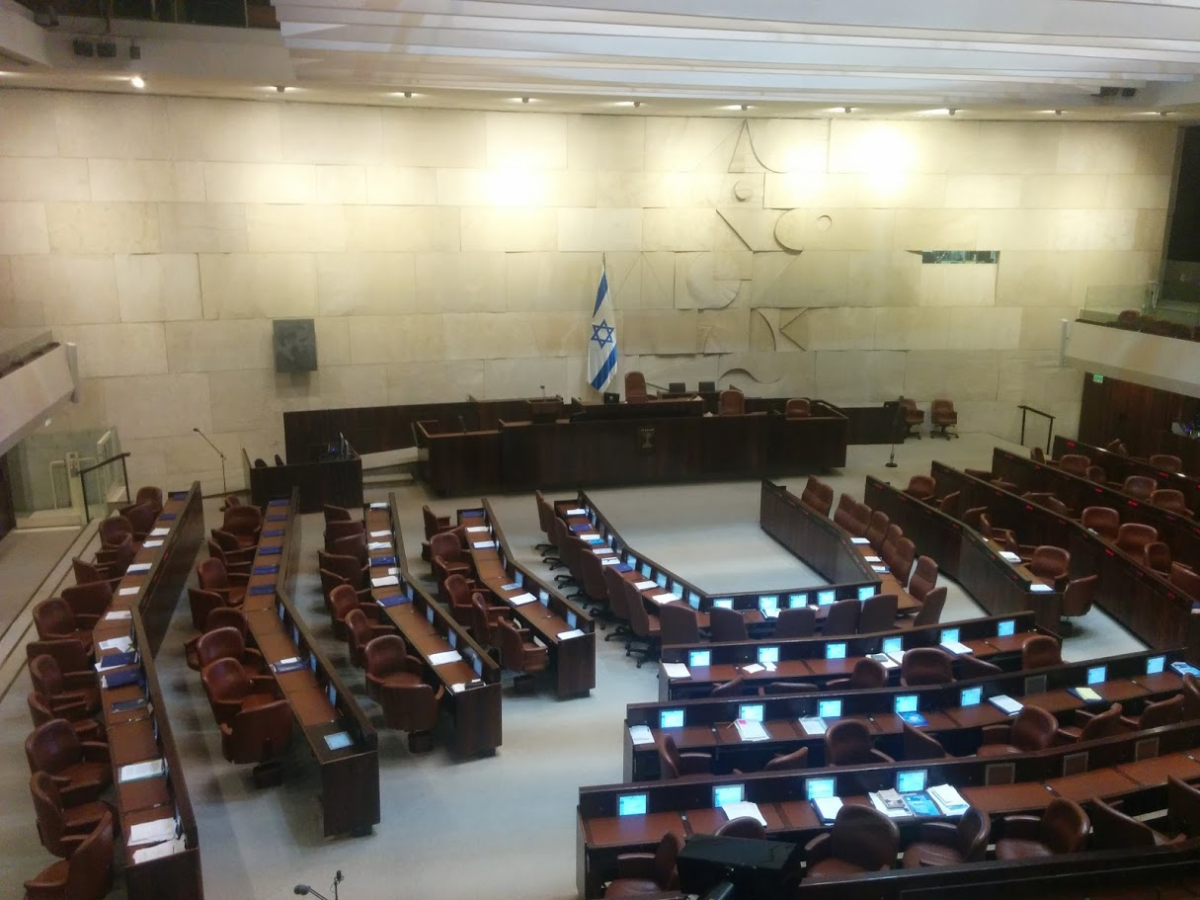Democracy in Practice: A mostly theoretical tour, which focuses primarily on all facets of the work of the Knesset: the election process; the roles of the Knesset members; the work of the committees and more; while emphasizing the close link between the work of the Knesset and the daily lives of Israeli citizens. The main stops along the tour are: The Committee Rooms, the Plenary Chamber, and the display of the Declaration of Independence. This tour does not provide information about the art works and archeological findings or the architecture of the Knesset building, as it is meant for groups of a maximum of 50 adults interested in parliamentary work.
Duration of the tour: About an hour and a half.
Art and Photography: A tour emphasizing the art works displayed in the Knesset building: paintings, photographs, sculptures, archeological findings and more. The tour stops include the Chagall Hall; the Plenary Chamber; the exhibitions of photographs by David Rubinger, the Knesset’s resident photographer; the art work displayed on the Government Floor; the works of Moshe Castel and Re’uven Rubin; and the Knesset’s Kedma wing with its Second Temple period Catacombes and Byzantine Mosaics, the Seven Species Menorah, the Eternal Flame Memorial, and the Benno Elkan Menorah. This tour does not provide information about the Knesset’s parliamentary work, as it is meant for groups of a maximum of 50 adults, interested in art and photography.
Duration of the tour: About two hours.
Architecture: The aim of this tour is to provide a view of the signature architectural attributes of the Knesset building, and the purpose and use of each of the Knesset’s wings; as well as presenting the various ways the planning of the building gives expression to the values of democracy. The main stops of this tour are the Knesset forecourt, the Plenary Chamber, the Chagall Hall, the Knesset Library, the Government floor, the factions’ floor and the Committee Wing . This tour does not provide information about the Knesset parliamentary work, as it is intended for groups of a maximum of 50 adults who have an interest and basic understanding of the field of architecture.
Duration of the tour: About two hours.
Green Tour: The tour emphasizes the Knesset’s environmental protection efforts and the “Green Knesset” sustainability project. During the tour, visitors learn about the Knesset’s roles – representation, legislation and oversight – as they are expressed in the various fields of environmental protection, and they also become familiar with the goals and implementation phases of the “Green Knesset” project. The tour is theoretical in essence, and its stops include the Committees Wing, the display of the Declaration of Independence and Plenum Hall. This tour does not include information about the works of art displayed at the Knesset. The tour is intended for groups of a maximum of 50 teenagers and adults. Duration of the tour: About an hour and a half.
Laws – from Legislaton to Enforcement: A combined tour of the Knesset and the Supreme Court. The tour begins at the Knesset and its purpose is to explain the progression of a law, from its initial legislation in the Knesset to enforcement by the Court. The Knesset section of the tour focuses on the legislative process in the Plenum and the parliamentary committees, and the main stations are the committee rooms and the Plenary Hall. This tour does not include information about the art works and archaeology displayed at the Knesset. The tour is meant for groups with a maximum of 50 adults who have an interest in the work of the Knesset and the Supreme Court, and the relations between them.
Duration of the tour: about three hours, including the security inspection at both institutions.
The Archaeology Park: An independent tour (without a guide) of the Knesset Archaeology Park which contains articles found in digs in Jerusalem dating back to six different historical periods: The Second Temple Period, the Late Roman Period, the Byzantine Period, the Islamic Period, the Crusader Period, and the Ottoman Empire Period. Each item is accompanied by a caption detailing its background and historical information. The tour is open to all, and there are no limitations of time or the size of the group.



